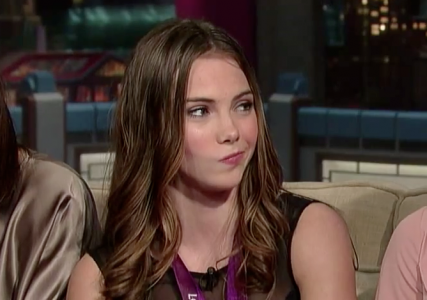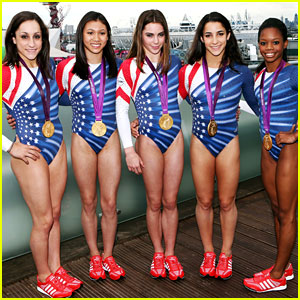so i wrote an essay on UFC 150 that is far longer than that wretched show really deserves
There were two big stories coming out of UFC 150. One was the decision in the Benson Henderson split decision win over Frankie Edgar to retain the UFC lightweight title in the main event.
The other was the business surrounding the match.
Henderson retained his title with a split decision win on scores of 46-49, 48-47 and 48-47 in a match that reasonably could have been judged either way. I had 49-48 for Edgar, with rounds three and five so close I couldn’t judge a winner, and with half points would have had it 49-48.5 for Edgar. I think most agreed that Henderson won the first round and Edgar the second. From there, it was very close to call in the next three rounds. I felt Edgar had the edge in the fourth round. The two judges who gave the fight to Henderson gave him rounds one, three and four while the judge who gave it to Edgar gave Henderson only the first round. There was an outcry of robbery, which was an insult to the term robbery and this was not a fight to knock the judges because three rounds could have legitimately gone in either direction, that’s how close the fight was. Fightmetric called the fight as a whole for Edgar, but under the ten point must system had it 48-48.
From a statistical standpoint, Edgar had a 66-64 edge in significant strikes, which tells you how even it was, however Henderson had a 36-30 edge in strikes that landed cleanly to the head. Henderson had an 11-7 edge in strikes in round one. Edgar had a 10-7 edge in round two. Edgar had a 15-13 edge in round three, however Henderson had a 5-2 edge in shots landing clean to the head. Henderson had a 17-15 edge in round four in strikes, with a 9-8 edge in clean strikes to the head. Edgar had a 15-11 edge in round five, and a 13-10 edge in clean strikes to the head.
It could have very reasonably been judged anything from 49-46 for Edgar to 48-47 for Henderson. I believe Edgar should have won, which seemed to be the prevailing opinion. Our post show poll had 56% for Edgar, 30% for Henderson and 15% even. But Edgar wasn’t robbed. It was a situation when the fight was over where one guy would be lucky, and that guy was Henderson.
Realistically, Edgar does deserve a rematch, but because this was his rematch, that wasn’t going to happen. After the fight there was all kinds of talk regarding how Edgar should move to 145 and make a run at Jose Aldo Jr. And since his real weight is 157-159 pounds, and he only cuts a few pounds, he’s actually a physically smaller guy in real life than Aldo Jr. and most of the UFC featherweights who are usually 160-170 pounders cutting down. But here is a guy who really should be lightweight champion right now. He has the power and wrestling ability to not get bullied around physically, and he’s faster than almost every lightweight. He wouldn’t have the same speed edge at 145. He’d be favored against anyone in the division and would give Aldo Jr. an intriguing opponent, which right now he doesn’t have. At the same time, the featherweight division is not a marquee division and there are less big fights for Edgar at that weight.
They can’t give Edgar an immediate rematch but with the performance, he should not to be put out to pasture or considered anything less than a top title contender as a lightweight if he wants to stay there. You could make a very strong case right now that he should be No. 1 in the world at that weight.
While Cowboy Donald Cerrone, who scored a knockout win over Melvin Guillard on the show, talked of facing Anthony Pettis next, the way I see the division is like this: Henderson defends against Diaz next, the main event on the 12/8 Fox show. The other four top contenders are Cerrone, Gray Maynard, Edgar and Pettis. Since Edgar and Maynard have already fought three times, you can’t match them up again. So they should do Edgar against either Cerrone or Pettis, with the winner of that fight getting the next title shot. Maynard should face the one who doesn’t face Edgar, and the winner of that fight should be the next guy in line. And the reality is injuries will probably speed up the process in some form.
Overall, UFC 150 was a good show. The main event was exciting. It didn’t have fireworks, but it was exciting because at no point was it clear who was going to win the fight and it went 25 minutes, right down to the wire. The semi, with Cerrone vs. Guillard, was one of the most exciting one minute fights in UFC history. Guillard dropped Cerrone right away, and hurt him worse than he’s been hurt in his entire career. But Cerrone came back with a high kick and a straight right that knocked Guillard out.
Cerrone ended up getting two $60,000 bonus checks, one for best knockout and the other for best fight. Guillard also got a $60,000 bonus, probably the first time in history a guy who got knocked out in 1:16 was ever given a best fight performance bonus. Dennis Bermudez got the best submission bonus.
The main card was really only marred by a dull match where Jake Shields, moving up to middleweight, won a decision in a fight heavily booed, over Ed Herman. Any handicapping of this fight would give Herman the standup edge and Shields the wrestling and ground edge. But Herman was the one who initiated the grappling, basically fighting Shields’ fight and coming up the loser in a fight that he stylistically had a good shot against a bigger name.
From a business standpoint, that wasn’t so good.
It started the night of the show, when the press conference started. Dana White, nonchalantly, as he does to start every press conference, gave the business figures for the 8/11 show at the Pepsi Center in Denver, as 15,008 people, and $650,000. At first, there were mumbles that surely he misspoke, because those numbers don’t add up. But later White confirmed the gate figure. What that means is for the first time for a PPV event since UFC hit television in 2005, they had to not just paper the building, which has happened from time-to-time, but completely flood the market with free tickets. At press time we don’t have the actual paid vs. paper, but the house was scaled at about a $144 average ticket price, so $650,000 would be about 4,500 paid. If more people bought the cheaper seats than the expensive seats (likely), the paid would be a little higher, but it’s probably not going to be much over 5,000 at best. It was the lowest gate for a PPV show since October 7, 2005, a show at the Mohegan Sun Casino in Uncasville, CT, headlined by Andrei Arlovski vs. Paul Buentello for the heavyweight title. As far as the lowest for paid attendance, you would likely have to go back to 2003.
After the show, White also noted that they were expecting to take a hit on PPV. He received word that DirecTV went down all night so people with that provider were unable to purchase the show. Since he was at the show, he was probably only getting sketchy details. I was able to get the show on DirecTV with no problem. But there was an issue. Apparently if you automatically ordered through your remote in much of the country, there was no issue. However, if you tried to order by phone or by computer, there was a problem with the system that made it impossible, although the issue was apparently fixed in time for the replay show. We received a lot of feedback from DirecTV subscribers, split almost 50-50 between those who were able to see the show, and those who couldn’t, and many wanted to see it and gave up, not buying the replay. It was significant enough that it cost them a fairly significant number of buys that they would have gotten. But probably not enough to change it from a low number to even close to an average number.
Very early numbers indicate about 190,000 North American buys (this is not a direct buy number or even a strong estimate but just a very preliminary figure). While nobody going in expected big numbers, that would still be below most expectations. As we always say, there is significant potential margin of error this early, but suffice to say this show probably did not do well. We’ll have a better read on this in two weeks. But other indicators were down. Google searches, which usually have a decent correlation to where buys are usually not far from double searches, fell from 1 million for UFC 148 (which makes that correlation look bad but half of those were searches related to watching Anderson Silva shoulder Chael Sonnen at the weigh-ins, and for the show itself it was 500,000, which comes close enough to the correlation) and 100,000 for UFC 149 while this show was just over 50,000. But that shows DirecTV issues or not, the interest level in this show was well below normal.
It appears the show was a little down from UFC 149 in the U.S. (which could be DirecTV), and significantly down in Canada (since 149 came from Calgary so had far more Canadian media publicity, but that would have nothing to do with DirecTV).
But it looks to be the lowest number for a PPV that came from North America since 2005. This also indicates something else. When the first Edgar vs. Benson Henderson show from Japan did better than many expected, there were thoughts that Edgar, because he has such great fights with Maynard, with the come-from-behind wins, was finally getting respect and clicking as at least a second-tier level draw and star. However, all indicators suggested that wasn’t the case. I think this number for the same main event tells the message I thought from the Japan number. That the number may have been curiosity of the return to Japan, and was more likely because of Quinton Jackson, who has had a strong history as a drawing card, even though his career has faded in recent years.
In addition, the FX prelims did a 0.67 rating and 974,000 viewers, the number was way down from UFC 148 (1.8 million), but that’s to be expected given how much interest there was in that show. It was roughly the same as UFC 149 on 7/21, and was slightly ahead in the key demos. It was the highest rated show on cable in the time slot in Males 18-34.
First off, there are two things that should be said before one side starts screaming about people saying gloom and doom when everything is fine and the other side says gloom and doom. This is one show. Going forward, there are going to be big shows and there are going to be shows that aren’t so big. The fan dynamic has changed greatly. Part of it may be inevitability of doing so many shows, that shows are watered down and people are more willing to skip the ones without strong main events. UFC does feel in many ways closer to a sport like boxing than a more entertaining sport that has more of a modern feel to attract more than just fight fans, which was how it came across 2006-2010 when it was doing its big numbers. The idea of getting a bunch of people together to watch UFC isn’t the same as what it once was.
But going back a few years, what this means is the big ones will stay big, and maybe get bigger. But the secondary ones won’t do what they used to do. One bad show doesn’t necessarily indicate anything because we are only a month removed from a gigantic show, and the November and December PPV shows this year should do well.
Since the big show on 7/7, we’ve had a 7/11 show that didn’t sell many tickets in a traditionally strong (but now burned out) market; a first-time ever show in Calgary that did a tremendous gate, but not so much on PPV, but not any less than expected either.
You can argue too many shows, and this is the fourth PPV in seven weeks, and that’s asking a lot from the consumer base. I think more and more than anything more than one PPV per month is probably overdoing things. The group of guys getting together on Saturday night to watch UFC are not going to do it weekly. Sure, for the UFC nuts, they would like a show every Saturday, but if you market based on that fan base, you’re going to get 50,000 buys and drive away the masses.
We did a poll, and this would be a percentage of a subset that consider themselves UFC fans or have been UFC fans who follow the product. Of that subset, this is what they did on that night, and it shows there is no one answer but there are pressing issues.
15.4% said they didn’t watch because they are losing interest in UFC
14.8% said they watched it on an illegal stream
13.7% said they didn’t watch it due to a social activity that took precedence
10.7% said they personally purchased it on PPV
10.7% said they skipped the show due to what they believed to be a weak lineup. The key here is it was the overall lineup and not the specific main event that was the turnoff. That differs from boxing where it’s still all about the main event.
10.0% said they didn’t watch it for economic reasons, having bought too many PPV shows in too short a period of time
8.9% stated they were burned out by so many shows
7.7% said they watched it at a bar or a restaurant
3.3% said they skipped the show to watch the Olympics
2.6% said they watched it at a friends house
1.1% said they skipped it because they didn’t like the main event.
This did not have a deep lineup. It promised good action, but generally speaking, most UFC shows are going to give you good action. This was a very good show overall. It was only three weeks after the disaster of a show in Calgary, but seven days after a really strong show on FOX. I don’t see show quality as a big issue, good or bad.
This was the company’s second show of the modern era in Denver (the home of several early shows). The first, on 9/24, with Jon Jones vs. Rampage Jackson on top, did 16,344 fans, with 14,247 paid and $2,089,575.
White noted that when it comes to big shows, the live gate is almost never a problem. Because of that, he publicly stated he believed it was due to issues in the area and not the product.
“Talking about it, the shootings here, the fires that have been going on here, it’s been a really bad summer for this place. Once all that stuff started going down, we kind of felt it was not going to be a good gate here.” He was insistent it was not the main event that was the reason surprisingly few were willing to pay money for tickets, and it may be card depth even more than the main event.
That’s good to say to the media. But there are issues as the poll above showed people’s reasons for not buying were related to the availability of illegal streams, a weak lineup and so many PPV shows in a short period of time. The streaming and other social activities, which is always going to be competition, are going to be issues with every show. But there is a fan base in danger of being lost, a fan base that may have already left in the last year, but there is also a large fan base that is still there and strong, but many of them didn’t order this for a variety of reasons.
But as far as problems in Colorado, the Rockies (the baseball team in Denver) are averaging 34,000 paid this season, down from 36,000 last season. That’s with multiple games per week. If the Rockies are only down slightly, those issues can’t have any major effect on ticket sales for a once a year event.







